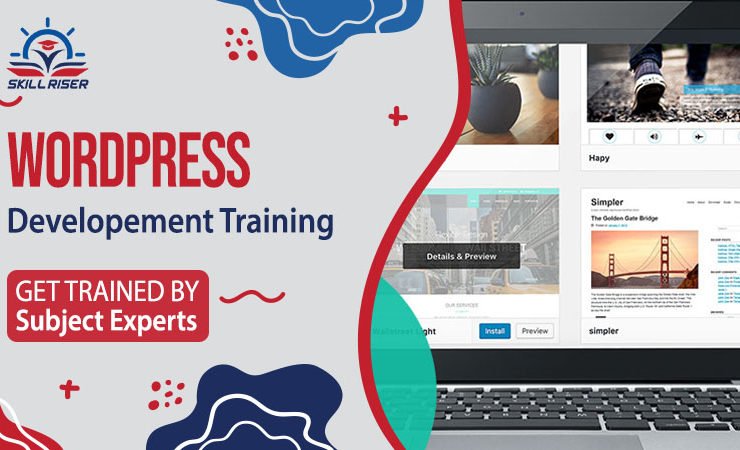- +971 50 654 5837
- enquiry@skillriser.ae
- NBQ Building - 404 Office, Bur Dubai

WordPress is a free open-source blogging tool and content management system. WordPress can be used to create a traditional blogging site; however, it can also be used to create a standard website for business or personal use. This course focuses on creating websites using WordPress. No previous experience is needed. This course is structured in a way to help all students, regardless of their experience, learn WordPress.
▪ Set up a domain and hosting account
▪ Set up a MySQL database on their server
▪ Install WordPress on the MySQL database
▪ Plan their website by choosing color schemes, fonts, layouts, and more
▪ Search for themes in WordPress
▪ Select, install, and activate a theme
▪ Add posts to their website
▪ Create website pages
▪ Add images, photo galleries, and more
▪ Create tags for SEO and categories to organize their posts
▪ Use WordPress as a content management system (CMS)
▪ Use widgets and plugins
▪ Create an ecommerce site
▪ Integrate WordPress with social media
▪ Customize a WordPress site using PHP, CSS, and HTML
▪ And more.
Skill Riser Training Institute offers the best WordPress training in Dubai. This training is for you if you are interested in creating your own website using WordPress or planning to get a skill to create WordPress website for others. This course also helps business owners to get more control and insight into their WordPress website. This course is designed for complete beginners.
Skill Riser Training Institute offers many courses. A qualified trainer will give you more skills. We have highly trained and skilled staff and management who will give you with the most up-to-date information regarding your course. The Skill Riser Training Institute tries to provide you the most up-to-date information as possible.
© Copyright Skill Riser Training Institute 2024 | Designed and Developed by Learnovate Digital